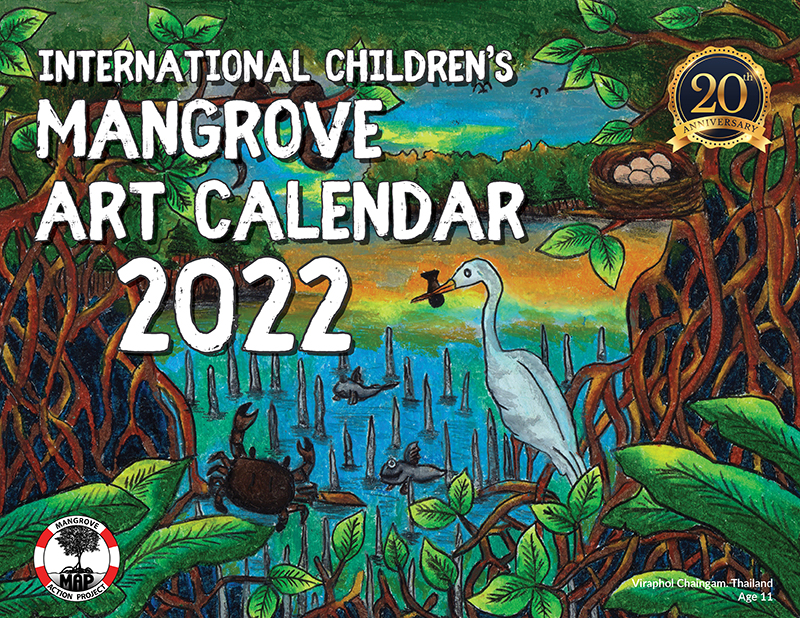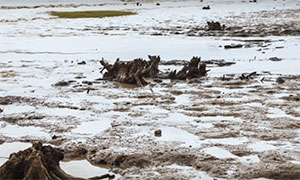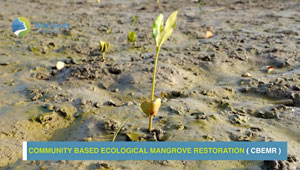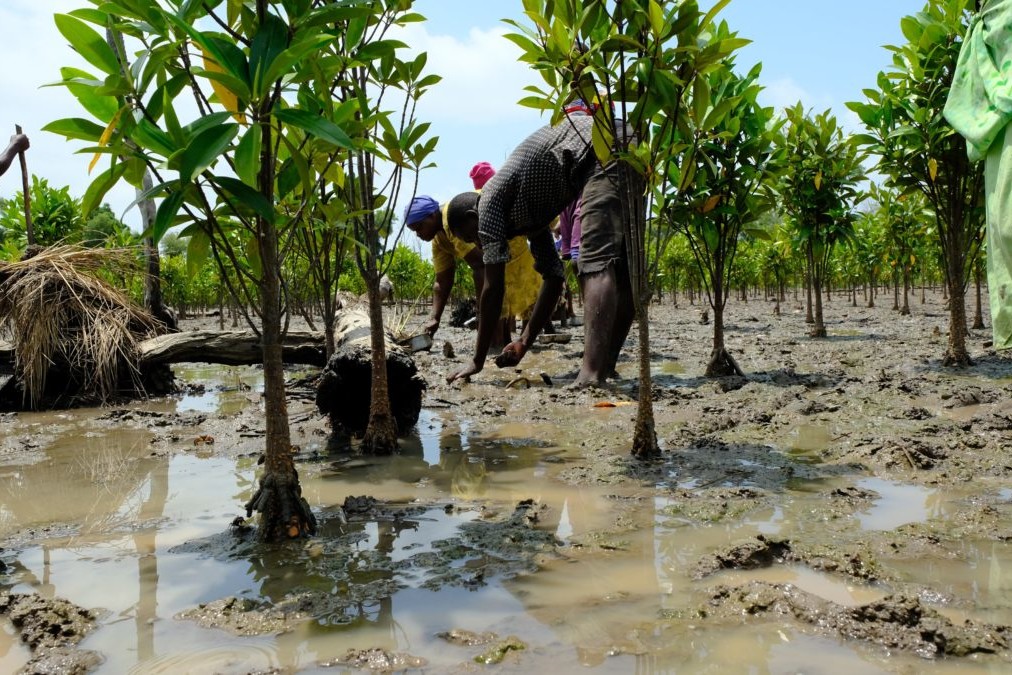|
The MAP News |
|
|
MAP Website en Español haga clic aqui
FEATURED STORY How Sundarbans’ Mangrove Man travelled a green journey  INDIA - The significance of the mangrove plantation was highlighted during the cyclone Aila that had swept the Sundarbans which comes under South 24 Parganas. Umashankar Mandal, often known as the Mangrove Man, teaches geography at Jangipur High School in Murshidabad and lives on the remote islands of the Sundarbans. His efforts to restore ecological balance in the Sundarbans through mangrove plantation and to raise public awareness about the benefits of mangrove trees have earned him the title of “Mangrove Man” Sharing his journey with The Sunday Guardian, Umashankar recalled, “I started my journey in 2009 when cyclone Aila hit the island. The idea came up when we saw that the people, homes, and animals had all sunk and drifted away. We started a relief campaign for the people, many people from Kolkata and nearby areas came to help us. Again, when I visited the Sundarbans in July, I noticed that the environment (landscapes and various types of mangrove trees) had been destroyed. We began working on restoring the ecological balance by engaging almost 220 villagers who used to collect Avicennia alba (plant) seeds. All their efforts and the plantation drive have helped to reduce carbon emissions, soil erosion, and so forth. At present, including the areas of Kakmari, Sonaga, Kumirmari and Chorghiri, we have planted 740,500 trees. We want to get people involved in planting more trees. READ MORE GLOBAL International Day of Forests  GLOBAL - Save the date: International Day of Forests 2022 21 March - a live celebration for the International Day of Forests as a high-level panel discusses "The Role of Forests in Ensuring Sustainable Consumption and Production", direct from the Swedish Pavilion at EXPO 2020 in Dubai. Today the world is facing unprecedented challenges, with climate change being among the most pressing of all. These challenges threaten the well-being of people and nature, and call for immediate action to develop innovative and creative solutions that set the world on a path to peace and prosperity on a healthy planet. At this event, a high-level panel will discuss how forest-based innovations, resource efficiency, forest-based products and ecosystem services can contribute to a sustainable lifestyle and accelerate a shift towards more sustainable consumption and production. READ MORE AFRICA Mozambique & Blue Forest Launch Africa’s Largest Mangrove Restoration Project* 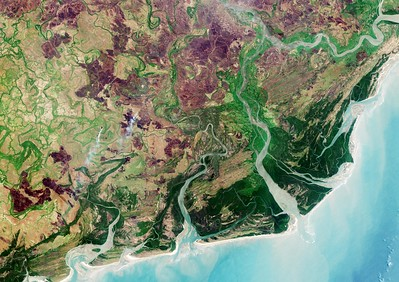 MOZAMBIQUE - The largest mangrove reforestation project in Africa has been launched by Mozambique’s Ministry of Sea, Inland Waters and Fisheries (MIMAIP) in partnership with Blue Forest, a UAE-based mangrove reforestation specialist. The project will be implemented in the biodiversity-sensitive provinces of Sofala and Zambezia, spread across 185,000 hectares of mangrove forests. It is expected that between 50-100 million trees will be planted as part of this long-term partnership. This project will offset approximately 200,000 tons of CO2 emissions annually, equivalent to taking 50,000 cars off the road. The partners will utilize high resolution satellite imagery, LiDAR technology and remote sensing data to identify key ‘hot spots’ where the need for restoration is highest. Artificial Intelligence (AI) algorithms will then be used to decipher the satellite data and field measurement to customize the reforestation activities in an accurate, efficient and transparent manner. READ MORE The Young Africans on a Climate Crusade to ‘Save the World’ One Forest at a Time 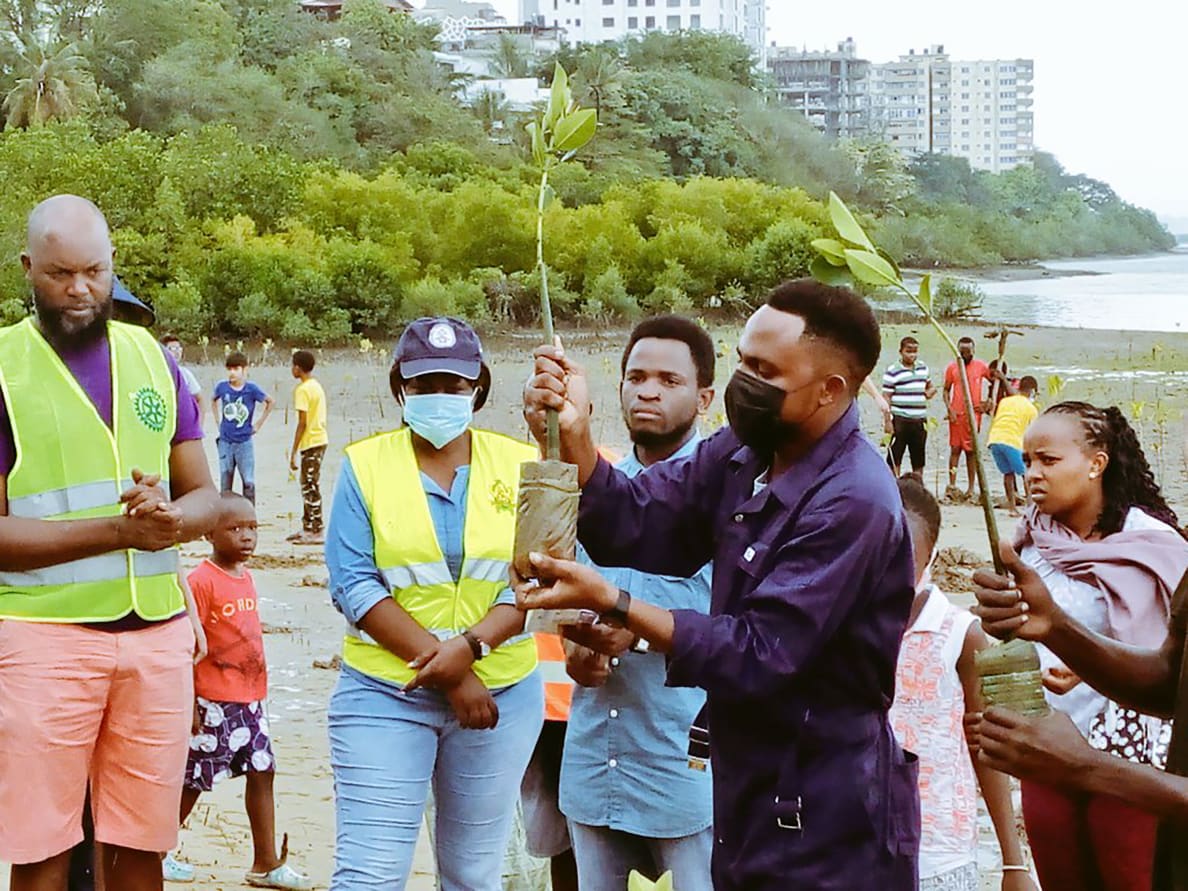 KENYA - Khamis Salim and the 25 other youths in his group were having a busy day when I first met him in November, at Tudor Creek along the coast of Kenya. Some were busy transplanting mangroves in mudflats, while others were engaged in scouting for illegal activities within the mangrove forest. Mangrove survival rates have dwindled to an all-time low, forcing the group to adopt a method of transplanting the trees in select rows 1.5 meters apart to keep them alive for longer. The youths’ mission: reverse years of damage caused by climate change to this vital tropical ecosystem. Salim, 30, told The Daily Beast how important this mangrove species is to his community. When he was growing up, he witnessed how the illegal extraction of mangroves for construction, medicine, and charcoal burning ravaged his community, killing off much of the marine wildlife that many locals rely on as a source of food and income. To save his community from devastation, Salim founded the Manyunyu Community Organization, which has been restoring mangroves along along the Kenyan coast since 2007. The group has planted over 10,000 mangrove seedlings. It’s run entirely by young people, who have been thrust into the role of preventing the continued degradation of the mangrove ecosystems while the government remains absent. READ MORE AMERICAS Cuba boosts marine protected coverage with new area spanning reefs to mangroves  CUBA - Hawksbill turtles, Antillean manatees, and groupers — these are just a few inhabitants of a newly designated marine protected area (MPA) in Cuba. Cuba publicly announced that it had established the new MPA off its northwest coast in an area known as Este del Archipiélago de Los Colorados, which translates into English as “East of Los Colorados Archipelago.” Spanning 728 square kilometers (281 square miles), the MPA will provide protection for mangrove forests, seagrass beds and coral reefs, and helps boost the nation’s overall marine protected coverage to 28.5% of its marine continental shelf. Natalia Rossi, the Cuba country director for the Wildlife Conservation Society (WCS), an organization that helped implement the MPA, said the new site is noteworthy since this part of the Cuban coastline previously lacked protection. Moreover, the region is an important spawning site for coral reefs and fish like groupers and snappers. “[Research] shows that a lot of fish that spawn there provide the larvae for other populations in the region, including the southern United States,” Rossi told Mongabay. “There is a lot of connectivity also for migratory species, including North American shorebirds.” READ MORE ‘Almost impossible’: Scientists study secrets of inland mangrove forest  MEXICO - Mangrove trees live along tropical coastlines, where their exposed, gnarled roots grow down into salty water and the sediment below. So when scientists learned of mangroves growing more than 100 miles inland on Mexico’s Yucatan peninsula, they were astonished. “Having mangroves living in fresh water very far from the ocean, it’s almost impossible,” says Octavio Aburto of Scripps Institution of Oceanography. Aburto was part of a team that traveled deep into tropical forest to see these mangroves for themselves. “It was really amazing to see a mangrove, red mangroves, living beside a waterfall,” he says. Using genetic and geological data, the researchers found that the mangrove forest dates back more than 100,000 years to a period when warming temperatures caused glaciers to melt and seas to rise 20 to 30 feet. During that time, ocean shoreline replaced inland forest, allowing mangroves to grow. So studying the forest can help scientists learn more about the possible consequences of global warming. And it provides a warning about how dramatically sea-level rise can alter landscapes. READ MORE Benedict Key mangrove restoration flourishing  USA - Following nine mangrove forest restoration projects on Benedict Key in the Pine Island Sound last year, hundreds of the red mangrove propagules that were planted have started to grow — almost all bearing green leaves, according to the the Sanibel-Captiva Conservation Foundation. “This is a great sign that the damaged island could soon be restored to its original mangrove cover,” Community Conservation Coordinator Kealy McNeal said following a Jan. 28 visit to the key to review progress. “This is the first sign of successful restoration.” The SCCF reported that the mangrove ecosystems of Pine Island Sound are a vital component of the estuarine and marine environment. They provide habitat and refuge to an array of wildlife, such as birds, fish, invertebrates, mammals and plants. The relationship between mangroves and their associated marine life cannot be overemphasized. Mangrove forests provide protected nursery areas for fishes, crustaceans and shellfish that are important to commercial and sport fisheries. READ MORE ASIA Man of the moment for dwindling mangrove 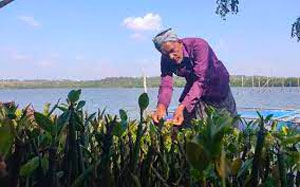 INDIA - Several varieties of mangroves, spread over vast tracts of land, have been cut down in Kannur in the recent years to facilitate Kaipad and shrimp farming. All through, 58-year-old Parayil Rajan, a resident of Thavam, near Pazhayangadi, has been fighting a lone battle against the trend. Besides creating awareness among the people, he is on a mission to cultivate mangroves, especially the varieties that have dwindled due to deforestation, in his nursery on the premises of his house. Rajan, a fisherman, has been planting mangroves right from his childhood, and their massive destruction of late has been disheartening to him. Mangrove varieties such as Ezhuthanikandal, Kuttikandal, Pookkandal, Chullikandal, Machinthol, Nakshathrakandal, Vallikandal, and Uppukaravu are slowly disappearing from Madayi and Pazhayangadi areas. Mangroves are being cleared from private land for shrimp and Kaipad farming, for which huge funds are made available by various agencies, he said. “People have little concern for mangroves, which they now see as a hindrance to profit-making. Mangroves create a fertile ecosystem for fish to breed and their axing has brought down the fish population. Migratory birds flock to the area and breed during the season. All this would be lost with the cutting of mangroves,” he said. READ MORE The mystery of Maldives’ dying mangroves 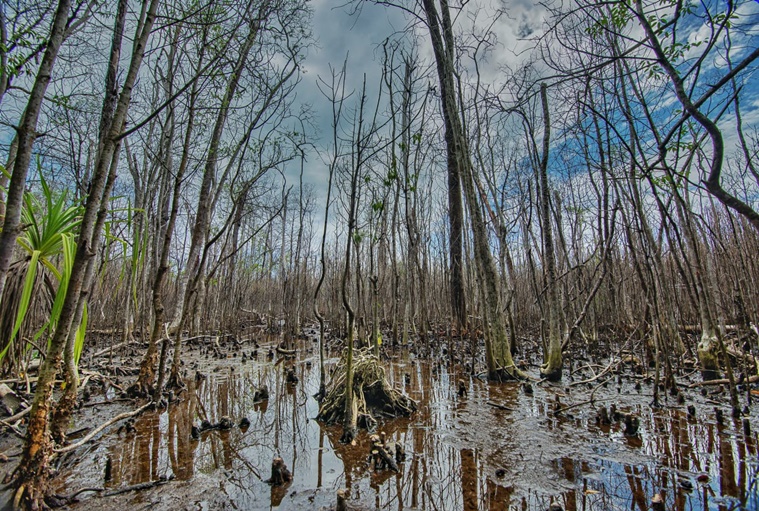 MALDIVES - Some three years ago, during one of his daily visits into the mangroves of Neykurendhoo island in northern Maldives, 45-year-old Ibrahim Marif began noticing something strange — the mangroves were dying. Concerned about the degradation happening in front of him, Marif rushed to tell the island’s council members, a local government body that oversees everyday affairs. By February 2020, just before the onset of the Covid-19 pandemic, the health of the mangroves had deteriorated to such a degree that the country’s Environmental Protection Agency (EPA) began to take notice and sent its scientists to the islands to conduct field surveys and laboratory analyses. Simultaneously, photographs of the dying mangroves in 11 islands in northern Maldives began flooding social media, showing large patches of grey in between the lush green mangrove forests that had been struggling to survive. The sentimental value attached by the Maldivian people to the mangroves meant that the government had to act quickly to find the cause. READ MORE Chinese dams on Mekong River endanger fish stocks, livelihoods 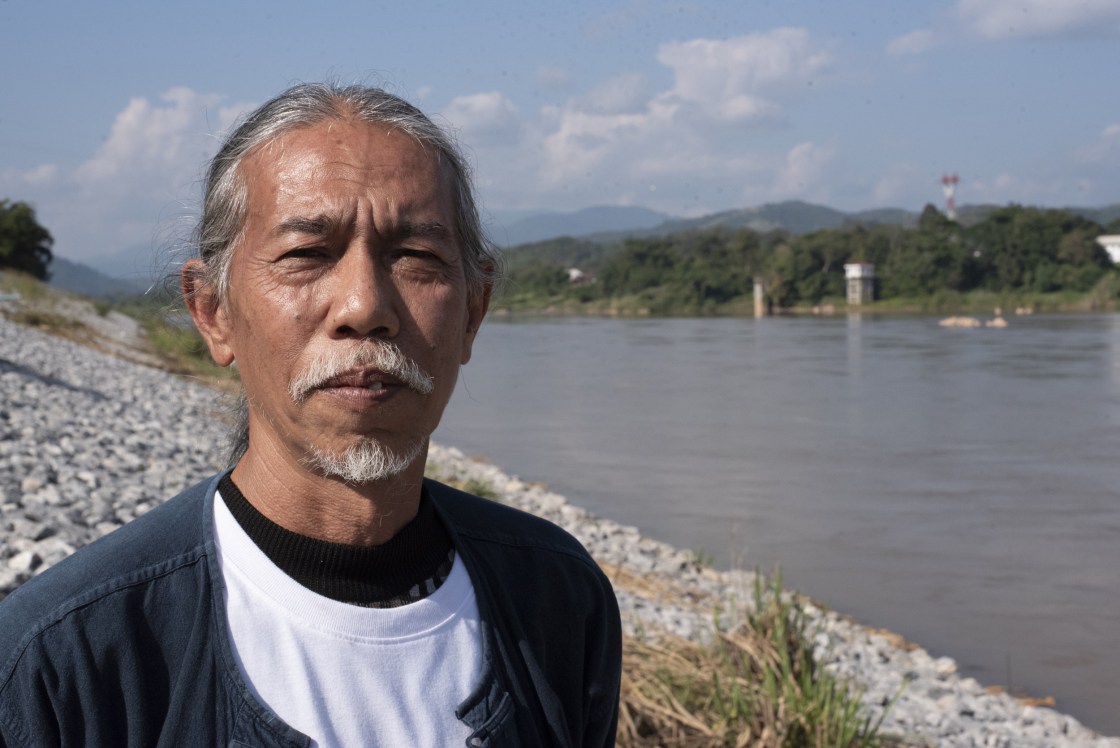 THAILAND - For Pianporn Deetes, the Mekong is more than a river. “This is not just liquid, but this is the entire life-supporting system,” Deetes, a local activist, said recently on a wooden long-tail boat heading upstream in northern Thailand’s Chiang Rai province. The Mekong, one of the world’s longest waterways, runs about 2,500 miles from its source in the heights of the Tibetan Plateau. Its sinuous path takes it through six countries: China, Myanmar, Laos, Thailand, Cambodia and Vietnam, where it flows into the South China Sea. Tens of millions of people rely on the river, whose name is sometimes translated as the “mother of waters,” for food, water, energy and income. Now Deetes, who calls herself a “child of the Mekong,” is battling to save the river she grew up with. The banks of the fast-moving river are lined with crops, grazing livestock and pontoons for fishing villages. But the fish have been disappearing: The Mekong River Commission — an intergovernmental group made up of Cambodia, Laos, Thailand and Vietnam — estimated that this stretch of river has 40 percent fewer fish than it did 10 years ago. READ MORE Editor's note : MAP does not necessarily endorse all of the reports we include in our newsletter, but simply are trying to provide news about mangrove related work going on around the world." Indonesia's fishers harness protective power of mangrove forests* 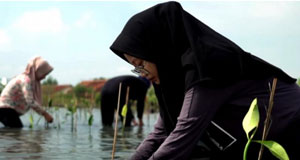 INDONESIA - Up to 40% of Indonesia´s mangrove forests have disappeared, many having been removed to make way for shrimp and fishponds. But after decades of being perceived as a nuisance, the plants are gaining popularity, with fish farmers increasingly recognizing their ability to provide a protective green belt to help avoid coastal erosion. We visited two projects aiming to protect the unique biodiversity of the forests. Sri Rejeki, a marine scientist with a special interest in pond management and mangroves, is a leading force behind the project Associate Mangrove Aquaculture. Together with her team, she teaches local fish farmers how to create new levees and systems of locks to regulate the flow of water. This facilitates the collection of sediment that allows mangroves to grow naturally. The project aims to defend nearby villages as well as pond facilities from flooding, thereby protecting the earnings of the fish farmers. Rejeki is convinced that, in cooperation with the local population, mangrove forests will make a big comeback in the country. READ MORE Like this newsletter? *Articles in this newsletter may mention practices being used and/or show exagerated results being claimed without proof. Stories are presented here in effort to show mangrove related activity around the world and do not necessarily reflect Mangrove Action Project's views or mangrove restoration best-practices. |
ACTION ALERTS Stop construction work on a private port In Defense of the Quilombo Boca Do Rio TAKE ACTION! Tell Sumitomo to stop building polluting coal power in Bangladesh! TAKE ACTION!
MAP Website en Español
13 Year old Linda Li "Mangrove Adventure" from Kid Dream Art School
Video: Mangroves for the Future WANT TO GET INVOLVED?
Like this newsletter? Pease consider donating to MAP to keep it going. Giving could never be easier
Interested in connecting or working with MAP? Check out our opportunities here MANGROVE ISSUES Want to learn more about mangroves? What is CBEMR? Download MAP's 2 page CBEMR Information Sheet containing links to all MAP's CBEMR resources – CLICK HERE View MAP’s uploaded Videos at Question Your Shrimp Consumer/Markets Campaign! Mangroves: Guidebook to Malaysia – Click Here SHARE MAP'S VISION Our short documentary, Reducing the Risk of Disaster through Nature-Based Solutions : Mangroves Marvellous Mangroves Curriculum The Marvellous Mangroves Curriculum begins with a simple philosophy – getting future generations to not only learn about, but understand the importance of mangrove forests. VISIT
Marvellous Mangroves Curriculum in Bangladesh - WATCH VIDEO
Like this newsletter? Pease consider donating to MAP to keep it going. Giving could never be easier
"Question Your Shrimp" Campaign Question Your Shrimp - is it really sustainable? Sign the Petition
We strive to keep active links in our newsletter. However, due to circumstances beyond our control, occasionally links to stories may become broken. If you find a link to a story is not functioning, please cut and paste the headline into your browser search bar. In most cases you should be able to locate the original story. Not yet a MAP News subscriber?
|
|
Mangrove Action Project Click here to view past newsletters
|
|
Search News Archive
Saturday, February 19, 2022
MAP News Issue #540 - Feb 19, 2022
Saturday, February 5, 2022
MAP News Issue #539 - Feb 04 2022
|
The MAP News |
|
|
MAP Website en Español haga clic aqui
FEATURED STORY Exciting Mangrove Celebrations for World Wetlands Day 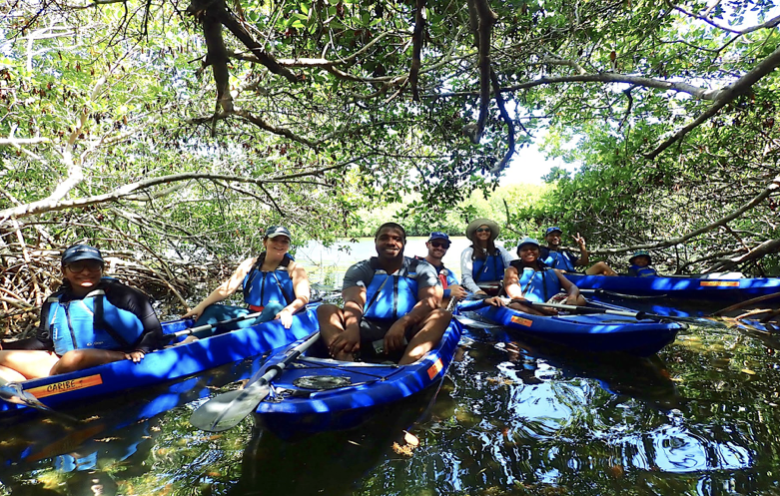 CAYMAN ISLANDS - The Mangrove Rangers announce an exciting series of special events to celebrate the 25th World Wetlands Day in early February. The day is celebrated to mark the date of the adoption of the Convention on Wetlands on February 2, 1971, in the Iranian city of Ramsar on the shores of the Caspian Sea. World Wetlands Day was first celebrated in 1997. The Ramsar Convention on Wetlands was the world’s first international environmental treaty. There is only one Ramsar site in Cayman, and that is the Booby Bird Pond and Rookery in Little Cayman which was designated a Wetlands of International Importance in 1994. The Booby Pond is a landlocked saline lagoon that supports the largest red-footed booby population in the Caribbean. There are currently over 2,400 Ramsar sites in the world covering an area of 2.5 million sq. kilometres. And while Grand Cayman’s Central Mangrove Wetlands – the largest contiguous mangrove wetlands in the Caribbean at some 3000 hectares – has for many years been recommended for inclusion as Ramsar site, successive governments have failed to move forward on the nomination. READ MORE GLOBAL There Can Be No Climate Action Without Targets to Protect Wetlands 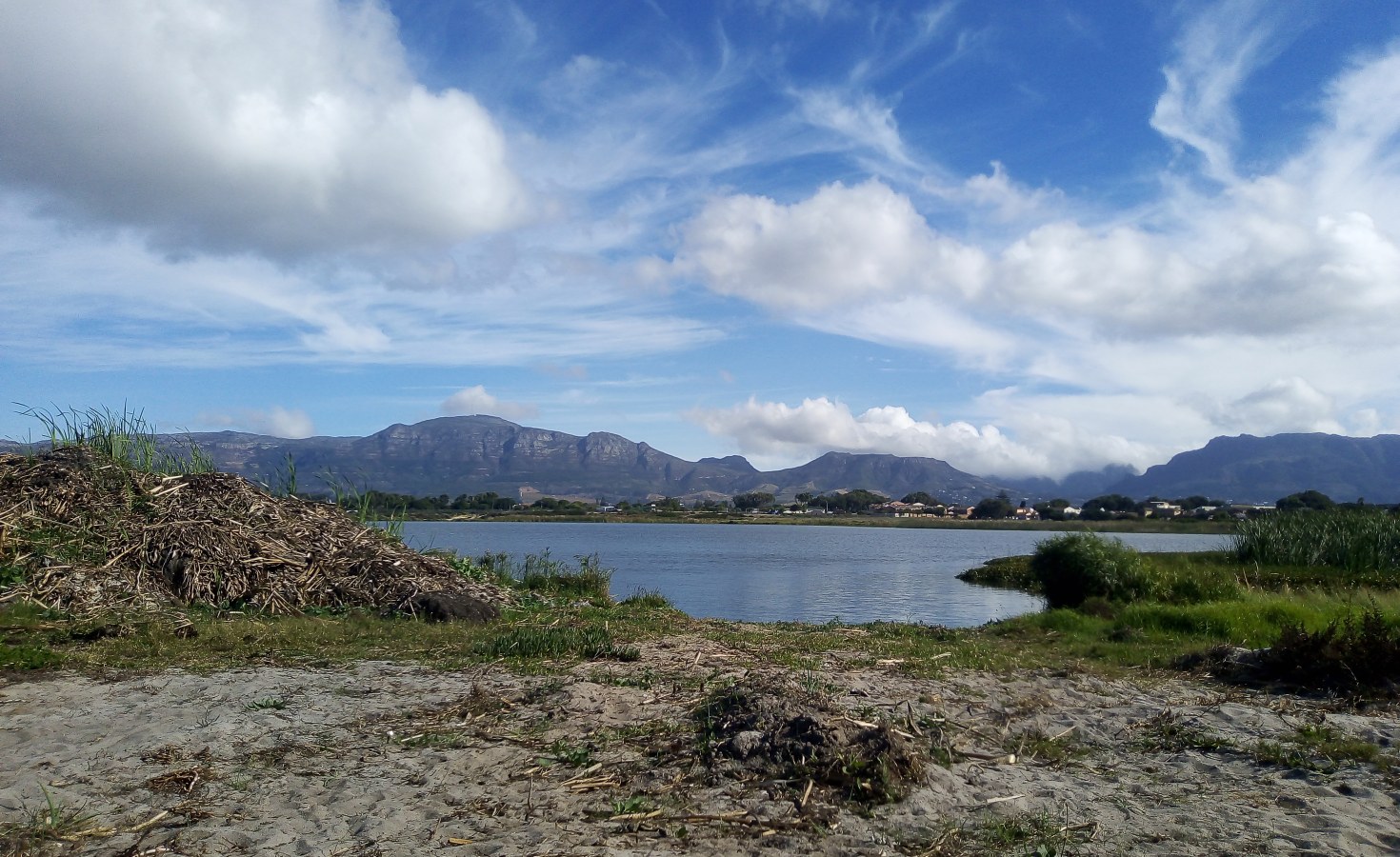 GLOBAL - Targets matter. They focus attention. They allow us to hold accountable the people who make them. Calls to fight climate change were vague until the world agreed a goal to limit warming to 1.5 degrees Celsius, as confirmed at the recent COP26 Glasgow climate conference. Likewise, a wish to halt deforestation has come into focus with the Glasgow deadline of 2030. But where does that leave wetlands? The world's waterlogged peatlands, mangroves, rivers, salt marshes and tidal flats hold - or lose, if damaged - more carbon than all our trees. They nurture - or make extinct, if lost - more biodiversity than forests. Peatlands damaged by drainage are responsible for more than 5% of global carbon emissions, and intact mangrove swamps hold four times more carbon per hectare than rainforests. Yet these irreplaceable treasures were sidelined in the commitments made in Glasgow. And they will fare little better at this spring's UN biodiversity conference in Kunming, China, which aims to set an admirable target to conserve 30% of the planet for nature but says little about what should be conserved and where. READ MORE AFRICA The Red List of Trees of Madagascar 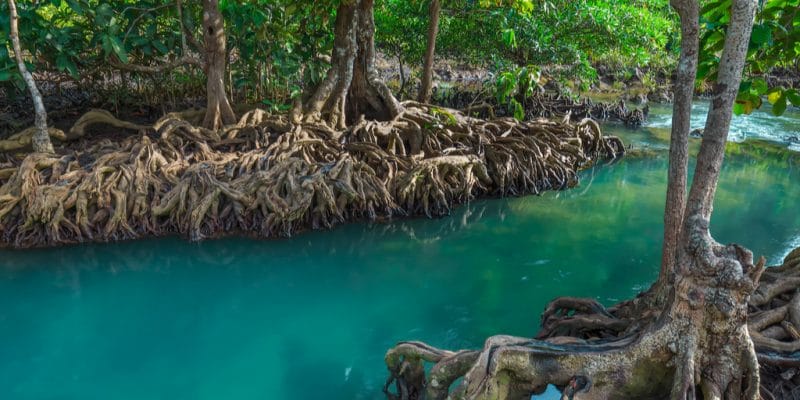 MADAGASCAR - The Red List of Trees of Madagascar provides the first comprehensive assessment of the conservation status of the trees of Madagascar. Madagascar is home to 3,118 tree species, making it the twelfth most species rich country in the world with respect to tree diversity. Moreover, 93% of these trees are endemic to Madagascar. Despite Madagascar being home to over 2,900 unique tree species and an increasing awareness of the threats facing plants, until relatively recently there has been limited data available about the conservation status of the country’s trees. In 2017, there were only 379 assessments for trees of Madagascar on the IUCN Red List. Over the past three years, >2,400 assessments have been compiled by researchers from Missouri Botanical Garden Madagascar Program, Kew Madagascar Conservation Centre, University of Antananarivo, Madagascar Plant Specialist Group, and other institutions across the world, in order to provide a full picture of the status of the trees of Madagascar. Over 94% of these assessments represented the first IUCN Red List assessment for the species. This work was funded by the Critical Ecosystem Partnership Fund in a project called “Assessing the Conservation Status of Madagascar’s Trees for Effective Conservation of Key Biodiversity Areas and Protected Areas” and Fondation Franklinia. This is the first comprehensive assessment of the status of the trees of Madagascar. READ MORE AMERICAS Mangrove Hummingbird in danger 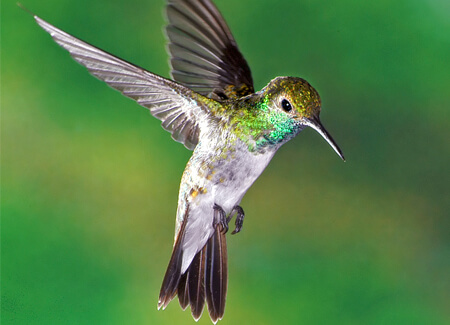 COSTA RICA - Imagine you're standing in the ocean with your back to the shore—then you see the Mangrove Hummingbird zip past. That's the usual way people lucky enough to see this bird experience it. The species is found only in mangrove swamps and adjacent vegetation along the Pacific Coast. It's so closely tied to mangroves that the bird even prefers to feed on mangrove flowers. Sea level rise associated with climate change is one of the biggest threats to the Mangrove Hummingbird. Since mangroves are low-lying, any rise in surrounding waters could quickly inundate the species' limited habitat. Habitat loss is another issue. Although mangrove logging is illegal in Costa Rica, trees are still cut to make room for shrimp aquaculture, road construction, and charcoal production. This ever-shrinking habitat puts Mangrove Hummingbirds and other vulnerable species at risk, including the Yellow-billed Cotinga, Black-cheeked Ant Tanager, and Turquoise Cotinga. READ MORE Mangrove deforestation leaves islands ever more vulnerable to climate change  BRITISH VIRGIN ISLANDS - When Donald De Castro was a boy in the 1940s, mangroves lined the shore and cays in front of his family’s small waterfront home in the British Virgin Islands (BVI). “We used to do a lot of fishing in mangroves,” the 86-year-old recalled. “They had snappers and they had different kinds of fish; we caught good fish.” Today, most of those mangroves don’t exist. They have been replaced by land reclaimed to expand the capital of Road Town, which now boasts a cruise ship village, marinas lined with hundreds of yachts, and office buildings housing the territory’s bustling financial services industry. The modern scene illustrates a dramatic economic shift since World War II that has brought unprecedented prosperity to the British overseas territory, a string of small islands that are home to around 30,000 people. The missing mangroves, however, illustrate the ecological consequences of those changes. READ MORE ASIA Mangroves moving towards extinction  PAKISTAN - Federal Minister for Maritime Affairs, Syed Ali Haider Zaidi, while talking about the mangrove destruction, recently stated that the entire area of Machhar colony has been encroached upon for three decades. Keeping in mind this statement, one might question the whereabouts of the mangrove forest located in Machhar Colony. Another mangrove forest which is along the Mauripur Road might also vanish with time since conditions are worsening along the coastline. Global warming in Pakistan has been on the rise for decades illustrated by the melting of glaciers in the Himalayas, the worsening climate conditions and increasing deforestation. Mangrove forests, a natural resource in Pakistan, are on the verge of becoming extinct which will further harm the environment. READ MORE Malaysia's mangrove-planting fishermen stumble at nature finance hurdle 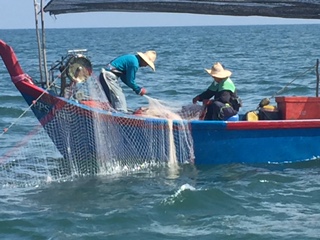 MALAYSIA - Walking across a swamp, retired fisherman Ilias Shafie and a small group of villagers plant mangrove saplings on Malaysia's west coast, one tree at a time. They have put in some 400,000 mangrove trees since a restoration initiative started two decades ago, in what was initially a bid to increase the catch of local fishermen. Now their work has taken on extra significance as alarm grows over global warming and nature loss, with mangroves regarded as a key weapon in the fight against climate change. But the surge of international concern has yet to help this community win the global finance required to expand its project, highlighting the barriers often faced by groups on the ground seeking to tap into growing funding flows for nature protection. "Mangroves are important to us fishermen - we need them because this is the breeding ground of fish," said Ilias, 70, recalling how dwindling mangrove forests affected his catch and livelihood, which prompted him to launch the initiative. READ MORE To unlock the full potential of its mangroves, India needs to first plug gaps in research 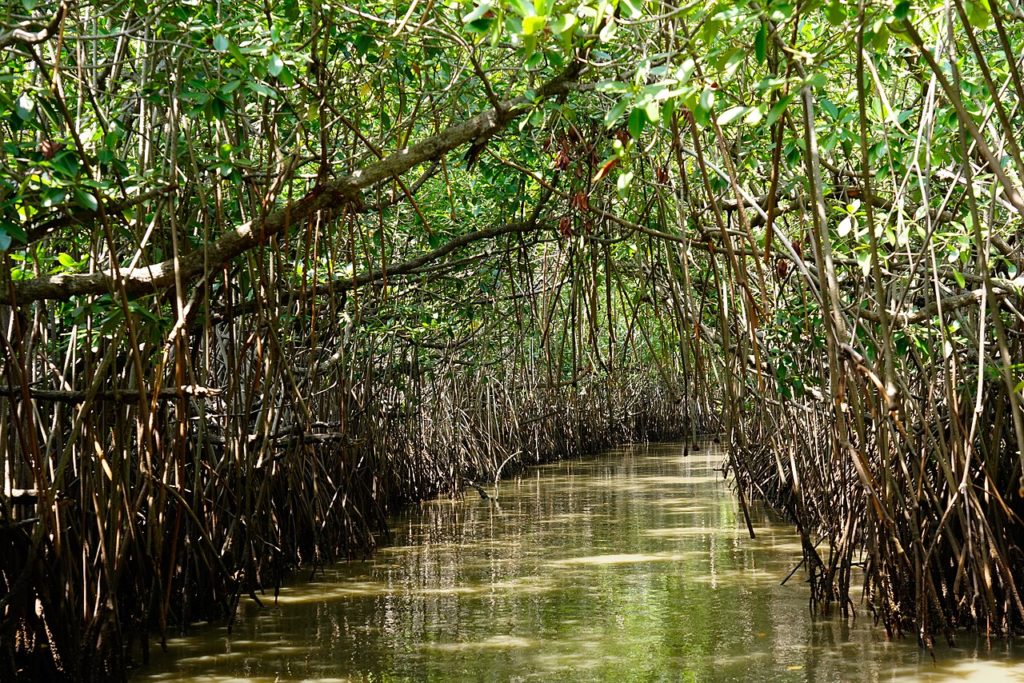 INDIA - Involving local communities in plantation projects is crucial for climate action centred on the ecosystem, according to scientist K Kathiresan. Getting things right with mangroves, ecosystems that feature on the global climate agenda for their carbon storage capacity, could set the stage for effective climate action and biodiversity protection in coastal areas, said noted mangrove scientist K Kathiresan. Kathiresan, who has worked extensively in Tamil Nadu’s Pichavaram mangroves, said restoring mangroves with a focus on biodiversity (diverse mangrove plant species and fauna) and in the right place, instead of growing mangrove monocultures, are crucial to mangrove health. He said that the involvement of local communities in the planning, execution and monitoring of plantation projects and a deeper understanding of fauna and micro-organisms associated with these amphibious defenders is key to climate action centred on mangrove ecosystems. READ MORE China explores involving communities in mangrove restoration 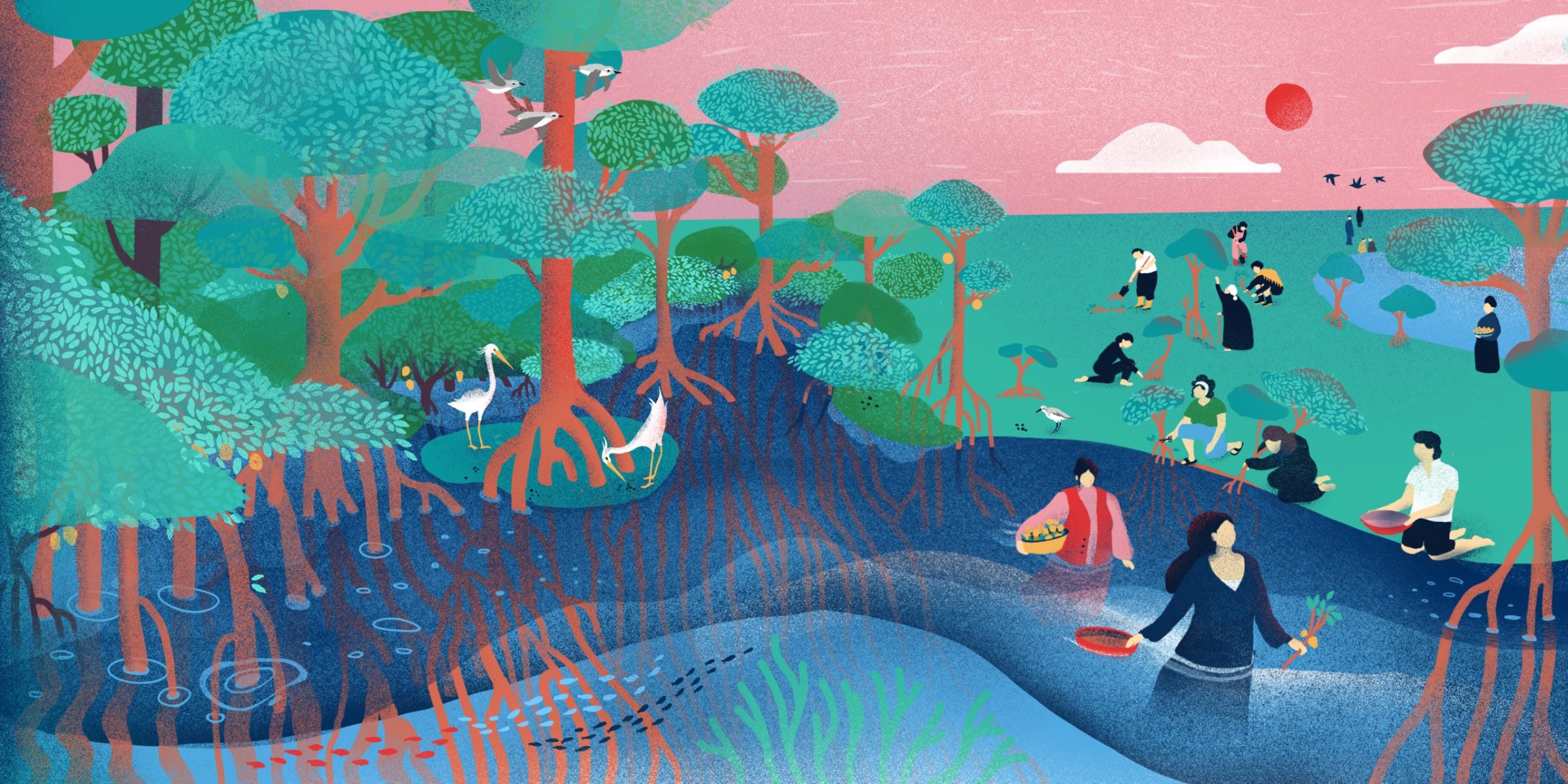 CHINA - The world’s mangroves have been disappearing at an alarming rate. China has been working hard to reverse that trend. Over 75% of its natural mangroves now fall within protected areas, compared to the global average of 42%. And in the first two decades of the millennium, large-scale planting saw China’s mangrove area increase by 23%. Despite these successes, questions have been asked for some years. Are expensive afforestation efforts sustainable? Might they involve unacceptable ecological risks? As the shortcomings of large-scale afforestation have become apparent, many Chinese nature reserves are looking to community participation to help protect and restore mangroves in the long term. Local people can contribute to the design, implementation and evaluation of such programmes. They may also help manage them in such a way as to sustainably use the mangrove ecosystem, for example through eco-friendly aquaculture or ecotourism. Can community participation provide a solution for restoring mangrove ecosystems? China’s mangrove conservation experts and NGOs are trying to find out. READ MORE Over 100,000 Gallons of Crude Oil Leaks Into the Sea Through Hole in Pipe  THAILAND - An operation to contain 400,000 liters (106,000 gallons) of crude oil that has leaked off the coast of Rayong, Thailand, is currently underway. Recently, a leak occurred near Map Ta Phut at an undersea location. Star Petroleum Refining Public Company Limited (SPRC) owns the pipeline and notified the Department of Marine and Coastal Resources of the problem. The department’s director-general, Sopon Thongdee, stated that stopping the leaking oil from flowing north and reaching Rayong’s beaches was a top priority. According to a statement released by SPRC, the leak occurred at a single location in the middle of the sea, where tankers load and offload oil. A slick of between 180,000 and 200,000 liters was headed for the shoreline between Mae Ramphueng beach and the Khao Laem Ya-Mu Ko Samet Marine National Park, according to Atthapol Charoenchansa, director-general of the Pollution Control Department. READ MORE Indonesia on track with peatland restoration, but bogged down with mangroves  INDONESIA - Indonesia has recorded mixed progress in its dual programs of restoring tropical peatlands and mangroves, acknowledging that achieving the latter goal will be far more challenging than for the higher-profile peatlands. The government has targeted restoring 1.2 million hectares (3 million acres) of degraded peatlands and 600,000 hectares (1.5 million acres) of degraded mangroves by 2024, with both programs overseen by the Peatland and Mangrove Restoration Agency (BRGM). In 2021, the first year for both programs, the BRGM recorded significant progress on peatlands, restoring 300,000 hectares (741,000 acres), or a quarter of the total. On the second goal, however, billed as the most ambitious mangrove rehabilitation program in the world, it managed to restore just 34,911 hectares (86,267 acres), or less than 6% of the total. “There’s still a lot of work that we have to do until 2024, considering that our target is 600,000 hectares,” Satyawan Pudyatmoko, the BRGM deputy for planning and evaluation, said at a recent online event. Both programs are crucial in Indonesia’s efforts to reduce greenhouse gas emissions; much of the country’s emissions come from deforestation and land-use change, including the clearing of peatlands for oil palm and pulpwood plantations, and mangroves for shrimp and fish farms. READ MORE |
ACTION ALERTS Stop construction work on a private port In Defense of the Quilombo Boca Do Rio TAKE ACTION! Tell Sumitomo to stop building polluting coal power in Bangladesh! TAKE ACTION!
MAP Website en Español
13 Year old Linda Li "Mangrove Adventure" from Kid Dream Art School
Video: Mangroves for the Future WANT TO GET INVOLVED?
Like this newsletter? Pease consider donating to MAP to keep it going. Giving could never be easier
Interested in connecting or working with MAP? Check out our opportunities here MANGROVE ISSUES Want to learn more about mangroves? What is CBEMR? Download MAP's 2 page CBEMR Information Sheet containing links to all MAP's CBEMR resources – CLICK HERE View MAP’s uploaded Videos at Question Your Shrimp Consumer/Markets Campaign! Mangroves: Guidebook to Malaysia – Click Here SHARE MAP'S VISION Our short documentary, Reducing the Risk of Disaster through Nature-Based Solutions : Mangroves Marvellous Mangroves Curriculum The Marvellous Mangroves Curriculum begins with a simple philosophy – getting future generations to not only learn about, but understand the importance of mangrove forests. VISIT
Marvellous Mangroves Curriculum in Bangladesh - WATCH VIDEO
Like this newsletter? Pease consider donating to MAP to keep it going. Giving could never be easier
"Question Your Shrimp" Campaign Question Your Shrimp - is it really sustainable? Sign the Petition
We strive to keep active links in our newsletter. However, due to circumstances beyond our control, occasionally links to stories may become broken. If you find a link to a story is not functioning, please cut and paste the headline into your browser search bar. In most cases you should be able to locate the original story. Not yet a MAP News subscriber? |
|
Mangrove Action Project Click here to view past newsletters
|
|
-
The community of adults and youth in Cayman Islands has come together recently to release a series of educational videos. Each is geared to...
-
By Alfredo Quarto, Program & Policy Director Co-founder, MAP There is a rather urgent situation concerning the bio-invasion of the Son...
-
By: Isabel Robinson, MAP Volunteer Intern Some months ago I decided to come to Thailand and do an internship in mangrove conservation, ...
MAP News Issue #596 = April 20, 2024
ENTRIES NOW OPEN! Mangrove Photography Awards 2024 10 Years Celebrating Mangroves GLOBAL - MAP has launched our 10th Mangrove Photograp...



